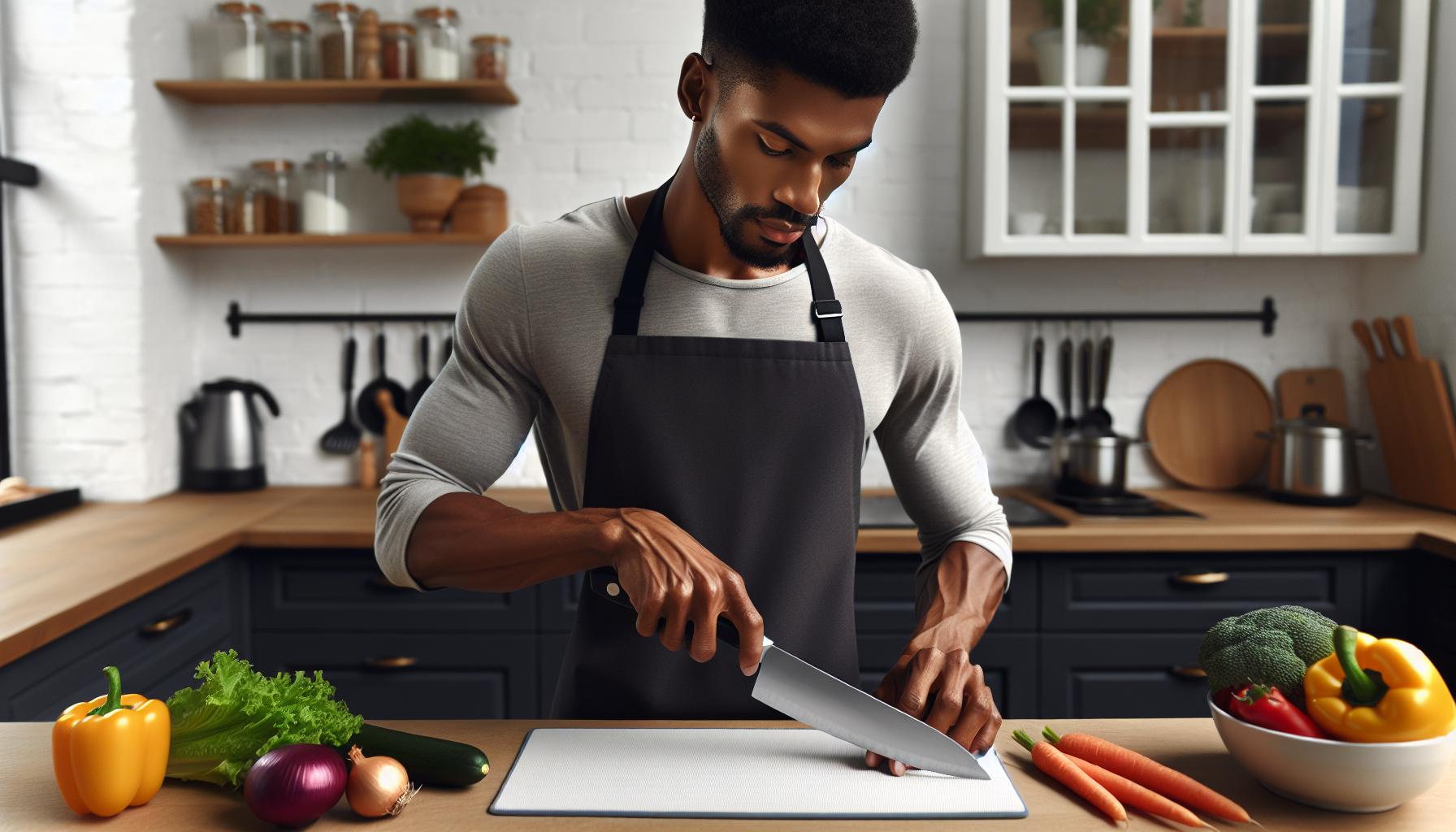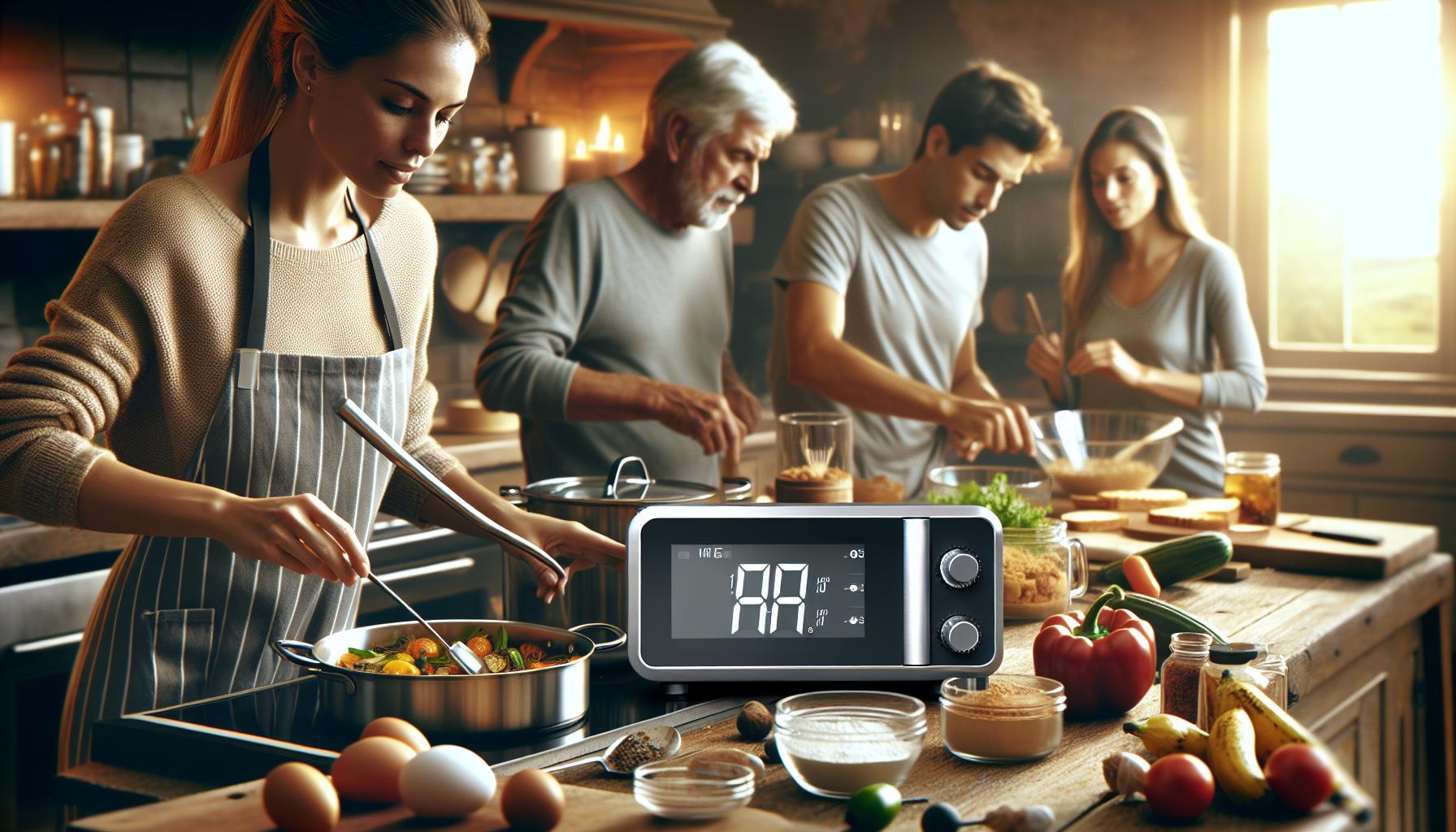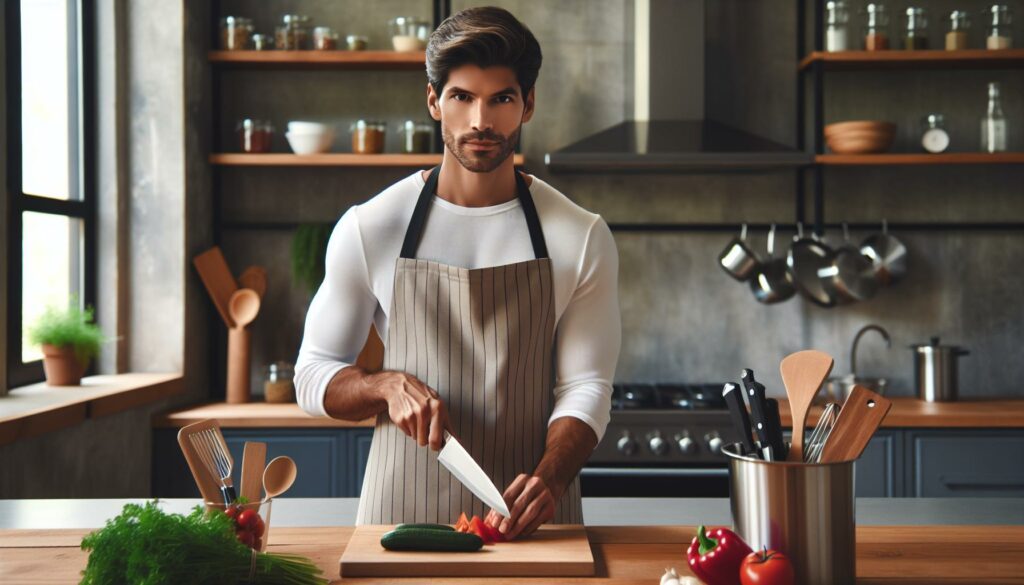Mastering the basics of cooking doesn’t require a fancy culinary degree or years of kitchen experience. In fact anyone can become a confident home chef with the right techniques and a dash of patience. From knowing when to flip that perfectly seared steak to understanding why pasta water should taste like the ocean these fundamental skills can transform kitchen novices into capable cooks.
Whether you’re tired of surviving on takeout or ready to impress your friends with more than just microwave meals it’s time to embrace the joy of cooking. Learning essential techniques like proper knife handling temperature control and ingredient preparation won’t just make cooking easier – it’ll make it fun. Plus there’s something incredibly satisfying about creating a delicious meal from scratch even if it starts with learning how not to burn toast.
Cooking Techniques for Beginners
A well-equipped kitchen forms the foundation for successful cooking. Having the right tools enables beginners to execute recipes efficiently while maintaining proper food safety standards.
Basic Utensils Every Beginner Needs
A starter kitchen requires 10 fundamental tools for basic cooking tasks:
- Chef’s knife (8-inch) for chopping vegetables, cutting meat
- Cutting board (wooden or plastic) for food preparation
- Measuring cups sets (both dry liquid) for precise portions
- Mixing bowls (3 sizes) for combining ingredients
- Wooden spoons silicone spatulas for stirring sauces
- Box grater for cheese vegetables
- Colander for draining pasta vegetables
- Nonstick skillet (10-inch) for sautéing frying
- Medium saucepan (3-quart) for cooking grains sauces
- Sheet pan for roasting baking
- Clear counter space (24×36 inches minimum) for food preparation
- Dedicated zones for:
- Prep area near sink
- Cooking station next to stove
- Storage space for frequently used items
- Easy-access storage for:
- Spices in a drawer or rack
- Utensils in countertop crock
- Cutting boards against backsplash
- Appliances positioned with:
- 12-inch clearance around each item
- Power outlets within reach
- Proper ventilation above cooking areas
Fundamental Knife Skills

Mastering knife skills forms the foundation of efficient food preparation. A proper understanding of knife techniques enhances cooking speed, consistency, and safety in the kitchen.
Proper Knife Grip and Safety
The pinch grip technique ensures optimal control when handling a chef’s knife. The thumb and index finger grip the blade near the handle while the remaining fingers wrap around the handle. Clean hands and a dry knife handle prevent slipping during use. A non-slip cutting board stays stable on the counter when placed on a damp paper towel. The free hand forms a claw position with fingers tucked under and knuckles guiding the blade. Keeping knives sharp reduces the force needed to cut, minimizing accident risks.
Basic Cutting Techniques
Four essential cutting methods create uniform pieces for even cooking. Slicing produces long, thin cuts by drawing the knife backward in a single fluid motion. Dicing generates uniform cubes through systematic horizontal and vertical cuts. Chopping creates rough, informal pieces ideal for rustic dishes or quick preparation. Mincing involves rocking the blade back and forth over ingredients to produce fine pieces. The knife blade maintains contact with the cutting board during each technique, creating a smooth pivot point for controlled movements.
Understanding Heat and Temperature

Heat control forms the foundation of successful cooking, enabling precise ingredient transformation through various cooking methods. Temperature management determines the difference between perfectly cooked dishes and kitchen mishaps.
Stovetop Cooking Methods
Stovetop cooking utilizes direct heat through four primary techniques: simmering, boiling, sautéing, and pan-frying. A gentle simmer maintains temperatures between 185-205°F, creating tender braised meats and flavorful sauces. Boiling occurs at 212°F, ideal for cooking pasta and blanching vegetables. Sautéing employs medium-high heat (350-375°F) to quickly cook small, uniform pieces while preserving texture and color. Pan-frying operates at higher temperatures (375-400°F), producing crispy exteriors and juicy interiors in foods like chicken cutlets and fish fillets.
| Cooking Method | Temperature Range | Best Used For |
|---|---|---|
| Simmering | 185-205°F | Braises, sauces |
| Boiling | 212°F | Pasta, vegetables |
| Sautéing | 350-375°F | Quick-cooking proteins |
| Pan-frying | 375-400°F | Crispy foods |
Oven Basics and Temperature Control
Modern ovens provide consistent heat distribution through three primary settings: bake, broil, and convection. Low temperatures (250-300°F) suit slow-cooking dishes like braises and roasts. Medium temperatures (350-400°F) work for baked goods and casseroles. High temperatures (400-450°F) create crispy textures in foods like roasted vegetables and pizzas. Digital thermometers ensure accurate temperature readings, eliminating guesswork from the cooking process.
| Oven Setting | Temperature Range | Common Uses |
|---|---|---|
| Low | 250-300°F | Slow cooking |
| Medium | 350-400°F | Baking |
| High | 400-450°F | Roasting |
Core Cooking Methods

Core cooking methods form the foundation of culinary mastery through distinct techniques that transform raw ingredients into flavorful dishes. Each method requires specific temperature control expertise to achieve optimal results.
Sautéing and Pan-Frying
Sautéing involves cooking food quickly in a small amount of hot oil over medium-high heat. Food pieces remain in constant motion through tossing or stirring to ensure even browning. The ideal pan temperature ranges from 350-375°F for sautéing vegetables onions mushrooms peppers. Pan-frying utilizes more oil at temperatures between 375-400°F creating a crispy exterior while maintaining moisture inside foods like chicken cutlets fish fillets pork chops. A heavy-bottomed skillet distributes heat evenly preventing hot spots that cause uneven cooking.
Boiling and Simmering
Boiling occurs when water reaches 212°F producing large bubbles that break the surface rapidly. This technique works best for pasta dried beans rice potatoes. Simmering maintains temperatures between 185-205°F creating gentle bubbles that barely break the surface. Stocks soups stews benefit from simmering which allows flavors to develop while preventing tough meat proteins from seizing. Maintaining consistent temperature prevents overcooking delicate ingredients enhances flavor extraction maximizes nutrient retention.
Roasting and Baking
Roasting uses dry heat at temperatures between 375-450°F to cook food evenly while creating appealing brown exteriors. Vegetables meats poultry develop deep flavors through caramelization during roasting. Baking operates at varying temperatures typically between 325-375°F depending on the desired outcome. Proper air circulation ensures even cooking throughout baked items like breads cakes casseroles. Both methods benefit from preheating allowing immediate heat exposure when food enters the oven.
Kitchen Safety and Food Handling
Safe food handling practices protect against foodborne illness while ensuring optimal ingredient freshness. Proper storage techniques combined with contamination prevention measures create a secure cooking environment.
Food Storage Guidelines
Raw meats stay fresh in the refrigerator for 1-2 days at 40°F or below. Store vegetables in moisture-controlled crisper drawers at temperatures between 33-40°F.
| Food Type | Refrigerator Storage | Freezer Storage |
|---|---|---|
| Ground Meat | 1-2 days | 3-4 months |
| Poultry | 1-2 days | 9 months |
| Fish | 1-2 days | 6 months |
| Fresh Vegetables | 3-5 days | 8-12 months |
| Leftovers | 3-4 days | 2-6 months |
Place raw meats on the bottom shelf to prevent drips onto other foods. Store dry goods like pasta rice in airtight containers in a cool dark place. Label containers with purchase dates to track freshness.
Cross-Contamination Prevention
Color-coded cutting boards separate raw meats from produce: red for raw meat green for vegetables. Clean knives cutting boards between ingredients with hot soapy water. Use separate plates utensils for raw cooked foods.
| Prevention Step | Key Actions |
|---|---|
| Hand Washing | 20 seconds with soap before after handling food |
| Surface Cleaning | Sanitize counters after each use |
| Tool Separation | Dedicated tools for raw meats produce |
| Storage Order | Raw meats below ready-to-eat foods |
Wash hands frequently especially after handling raw meats. Sanitize countertops cutting boards with a bleach solution of 1 tablespoon per gallon of water.
Seasoning and Flavor Development
Seasoning transforms basic ingredients into flavorful dishes through the strategic use of salt, spices, and herbs. Proper seasoning techniques enhance natural flavors while creating depth and complexity in dishes.
Salt, Pepper, and Basic Spices
Salt awakens flavors in food through its ability to draw out moisture and intensify taste compounds. Kosher salt proves ideal for cooking due to its pure flavor and easy-to-pinch texture. Black peppercorns deliver complex heat when freshly ground, making them essential for finishing dishes. A starter spice collection includes ground cumin for earthiness, paprika for color and mild sweetness, garlic powder for savory depth, dried oregano for Mediterranean notes, and ground cinnamon for warmth in both sweet and savory applications. Store spices in airtight containers away from heat and light to maintain freshness for 6-12 months.
Tasting and Adjusting Flavors
Professional cooks taste food throughout preparation to build balanced flavors. Season ingredients in layers, starting with a pinch of salt during initial cooking stages. Add spices early to allow their flavors to bloom in hot oil or fat. Taste again after each major ingredient addition, adjusting seasonings gradually. Acids like lemon juice or vinegar brighten flavors, while a pinch of sugar balances excessive acidity or heat. Let complex dishes rest 5-10 minutes after cooking to allow flavors to meld before final seasoning adjustments. Use clean spoons for each taste test to maintain proper food safety.
Time Management in the Kitchen
Efficient time management transforms cooking from a stressful task into an enjoyable experience. Organizing tasks and maintaining a structured workflow helps create delicious meals without feeling overwhelmed.
Mise en Place
Mise en place establishes order in the kitchen through systematic ingredient preparation. This French culinary technique involves measuring ingredients, chopping vegetables, and organizing tools before cooking begins. Creating prep stations streamlines the cooking process by grouping similar items together:
- Station 1: Measured dry ingredients (spices, flour, sugar)
- Station 2: Prepped vegetables (diced onions, sliced carrots, minced garlic)
- Station 3: Portioned proteins (trimmed meat, filleted fish)
- Station 4: Prepared liquids (stocks, oils, sauces)
Clear bowls or containers store prepped ingredients until needed, reducing clutter and preventing forgotten items during cooking.
Multi-Task Cooking
Strategic multi-tasking maximizes efficiency while maintaining food quality. Experienced cooks sequence tasks based on cooking times and preparation requirements:
- Start long-cooking items first (rice, roasted vegetables, braised meats)
- Prepare quick-cooking ingredients while others cook (salad assembly, garnishes)
- Group similar tasks together (chopping all vegetables at once)
- Use downtime effectively (cleaning workspace, washing dishes)
A kitchen timer tracks multiple dishes simultaneously, ensuring precise cooking times. Maintaining a clean workspace throughout cooking prevents cross-contamination and reduces post-meal cleanup time.
Create Memorable Meals
Learning basic cooking techniques opens up a world of culinary possibilities for kitchen novices. Armed with essential tools proper knife skills and temperature control anyone can create delicious homemade meals. Understanding core cooking methods food safety and seasoning principles builds a strong foundation for kitchen success.
Time management and organization through mise en place make the cooking process smoother and more enjoyable. With patience practice and the right techniques beginners can confidently navigate their kitchen adventures and create memorable meals for themselves and their loved ones.

